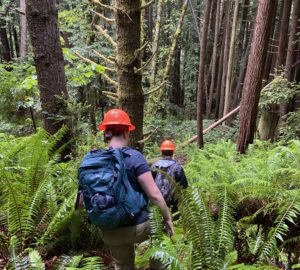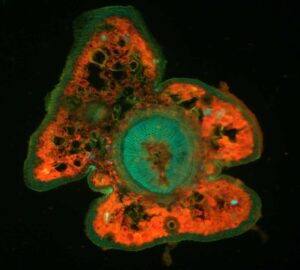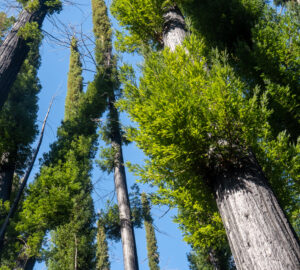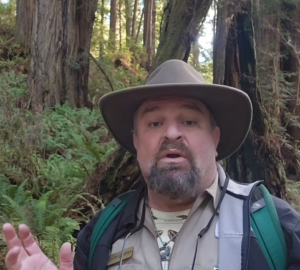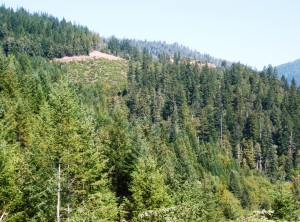
Ten years ago, the first crews entered the newly-protected Mill Creek watershed. Their mission: to implement a large-scale experiment in forest restoration.
As the result of past logging and misguided reseeding practices, the young forest of the watershed had become choked with thick growth. The dense trees prevented light from reaching the ground to allow a rich and diverse understory to develop, and the competition between the trees kept them from reaching their full potential. (Not to mention the fact that most of the planted trees were Douglas fir rather than redwood, leading to a species composition far out of balance with the surrounding ecosystem.)
So, the crews began to thin the forest according to a set of prescriptions developed by the League and its partners; the type and location of these thinnings was carefully determined in order to create the best conditions for the experiments. This year, through a research grant provide by the League, scientists will be able to discover the effects of these original treatments.
Among the questions this research hopes to answer: Did the thinning treatments change the species composition of the forest? Did the trees respond well and grow faster than uncut areas? How does the structure of the treated forest compare to that of old growth? Did bears (who love to strip the bark from young trees, especially in recent thinning treatments) have a negative or positive effect?
By measuring the size, spacing, and condition of the trees within their study plots, the researchers will be able to answer these, and begin to answer the most important question of all: did it work?
We will not know the results for another year or so, but in the meantime we at the League continue to grapple with these questions — not only the nuts-and-bolts concerns of tree spacing and species balance, but also the bigger, more philosophical ponderings: When should we restore, and when should we let nature take its course? Should we plan to use a single intensive treatment, or return to the same area several times, adjusting our practices along the way? Is simply speeding up the growth of the forest along its current course reason enough for restoration, or should we focus on areas whose ecology has been altered so much that it cannot again become what it once was without our help? When does our attempt at restoration cause more disturbance to the forest than it solves? To what exactly are we restoring the forest?
There is no single right answer, no magic bullet or panacea. Each restoration project is unique in its history, its geography and its ecology. Each project asks its own questions, and each will reveal its own answers in time.




